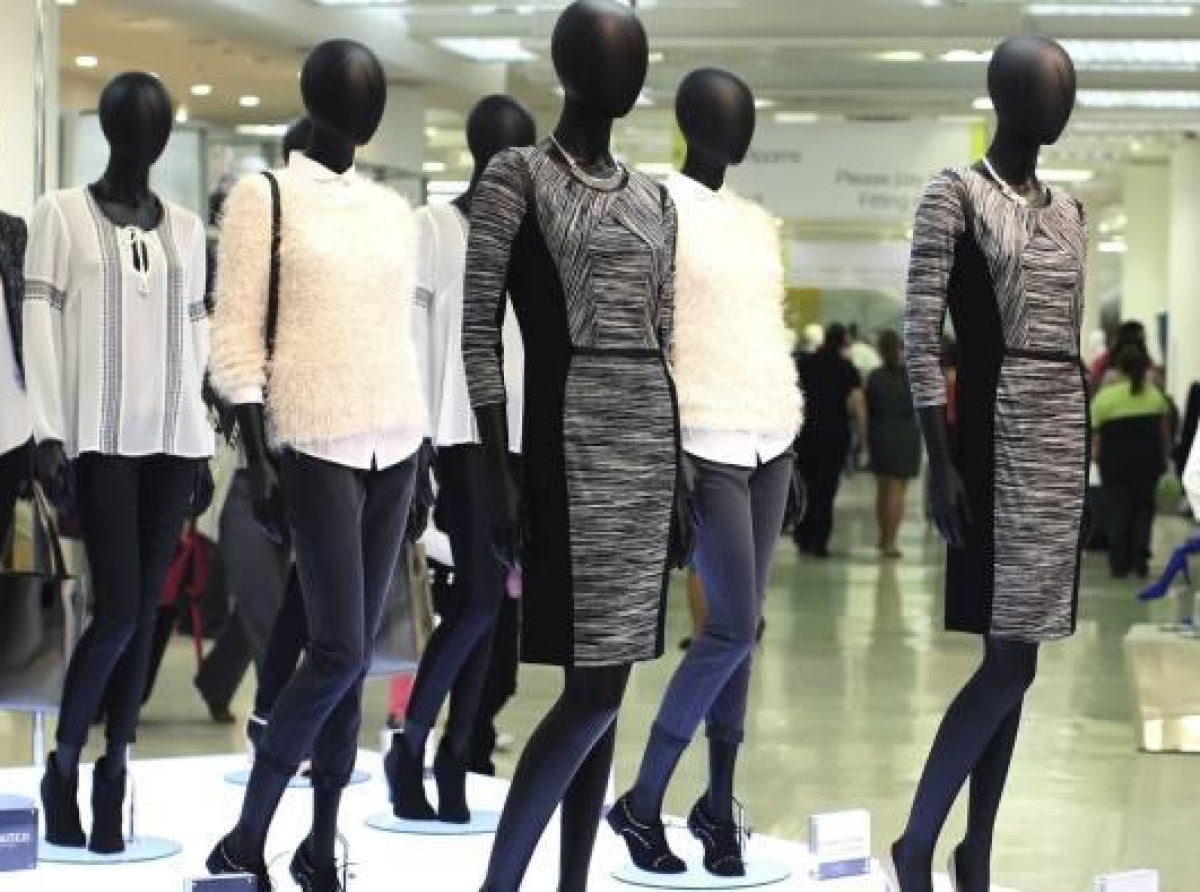27 June 2023, Mumbai
The fashion industry has taken notice of trendy tights, as seen on the spring/summer 2020 runways. Designers worldwide, including British designer Richard Quinn, have embraced this trend by creating tights adorned with bold floral patterns that complement their gown prints.
Emerging opportunities; The trend of incorporating logos is also prevalent, with brands like Gucci, Saks Potts, and Fendi prominently featuring their signage on tights this season.
Balancing Fashion and Sustainability
However, the high cost of these fashionable stockings and environmental concerns have led to a boycott.
The price of these tights often far exceeds their practical value, as they are typically worn only a few times before being discarded or torn apart, contributing to environmental issues.
Environmental organizations such as Extinction Rebellion and the Environmental Audit Committee have investigated the impact of fast fashion and fur, and as a result, tights have come under scrutiny.
Made from nylon emitting greenhouse gases, tights have become akin to single-use plastics in the textile industry. Their recycling process is challenging, and they often end up in landfills.
Tights Make a Statement
Fortunately, several hosiery manufacturers are now producing eco-friendly tights. Companies like Clayton offer socks made from a blend of yarns that incorporate eco-recycled nylon and microencapsulation technology.
These yarns contain aloe vera, retinol, and vitamin E. Another brand, TLC runs a recycling program where customers can return their tights for melting, and the elastane content can be used in long-lasting plastic products such as car components.
Environmental Concerns; Swedish Stockings is another brand that uses recycled polyamide, bio-cotton, and cashmere in their hosiery production, while also focusing on zero-waste facilities.
Luxury hosiery label Wolford has launched a range of stockings made from recycled nylon waste and discarded fishing nets, with plans to expand their sustainable offerings.
However, there remains skepticism about whether eco-friendly tights can be considered luxurious.
A Shift in Hosiery Manufacturing
Innerwear brand Heist also prioritizes durability in their tights. The brand has recently set sustainable goals for 2020, aiming to reduce energy consumption and greenhouse emissions.
They plan to introduce their first line of tights made from recycled materials, utilizing sustainable technologies like Roica Eco Smart elastane and Fulgar Q-NOVA®, a sustainable Nylon 6.6 made in Italy from production waste.
The Downside of High Fashion
Despite the extra costs associated with these brands, consumers are compelled to consider sustainable options. Marks & Spencer addressed this issue by introducing ladder-resistant tights in 2007, offering extra durability and high-denier options, which have become the brand's bestsellers.
However, the hosiery industry as a whole needs to undergo a revamp. While some brands have taken initial steps toward sustainability, substantial progress is still needed across the high street and among hesitant luxury brands.
US Market Diary
Technavio's latest market research report, titled "US Hosiery Market 2023-2027," predicts substantial growth in the US Hosiery market.
Projected Market Expansion; The market is expected to increase by USD 2,992.99 million between 2022 and 2027, exhibiting a compound annual growth rate (CAGR) of 3.95%. The comprehensive report analyzes the market, encompassing key drivers, major trends, and challenges.
Market Positioning
The report highlights the intense competition within the market, prompting vendors to implement growth strategies like promotional activities and increased advertising expenditure.
Market positioning is emphasized, showcasing strategies employed by leading vendors such as Gildan Activewear SRL, Spanx LLC, Wells Hosiery, and Apparel USA.
What drives market
Functionality Matters; Driving market growth are factors such as the high demand for designer and soft hosiery products, especially those made from organic and natural materials.
Additionally, the report identifies a significant trend of increasing demand for socks in the healthcare industry due to the rising prevalence of chronic diseases.
Intense Competition Spurs Growth
However, changes in trade policies pose challenges to market growth, particularly with the influence of China as a major market contributor.
Currently, over 80% of essential hosiery machinery and items are imported, creating a dependence on China and Taiwan.
Holds limitless potential
The hosiery cotton industry in India holds significant potential and aligns well with the country's Make in India initiative. Over the past 30 years, hosiery production has grown in Delhi-NCR, Ludhiana, and Bangalore.
However, there is still room for expansion in other cities like Jaipur, Indore, Pune, Kanpur, Varanasi, Nagpur, Surat, Bhubaneswar, Guwahati, Patna, and Ranchi.
Promoting Domestic Manufacturing; To boost the industry, it is crucial to establish more hosiery mills and focus on self-reliance.
By leveraging Prime Minister Modi's initiatives, India can become the world's largest hosiery producer and exporter, driving economic growth and employment opportunities.
Hosiery is in a sweet spot
The hosiery industry in India holds great growth potential, with expectations of a ten-fold expansion in the next 25 years. Emphasizing the long-term adoption of good cotton farming practices and striving for self-reliance, India can increase its global exports.
Strengthening the Cotton Industry; Taking advantage of Prime Minister Modi's initiatives like 'Sabka Sath Sabka Vikas,' 'Make in India,' and 'Self-Reliant India,' Rikhab Chand Jain, Former President of the Federation of Hosiery Associations of India (FOHMA), highlighted the need for the industry to focus on becoming the world's largest hosiery producer and exporter.
Jain emphasized the importance of establishing more hosiery mills and expanding the industry beyond Delhi-NCR, Ludhiana, and Bangalore to cities like Jaipur, Indore, Pune, Kanpur, Varanasi, Nagpur, Surat, Bhubaneswar, Guwahati, Patna, and Ranchi.

























